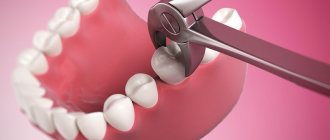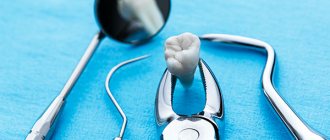An orthopedic traumatologist is a specialist involved in the diagnosis, treatment and prevention of diseases and injuries of the musculoskeletal system. Inflammatory processes, deformations, consequences of injuries - all this is included in the scope of his activity. If you need a consultation with a good orthopedic traumatologist, make an appointment at the Health Workshop clinic in St. Petersburg. Specialists are ready to examine each patient directly at the medical center and come home or work to provide assistance.
The Health Workshop clinic employs orthopedists with over 12 years of experience who regularly improve their skills through courses and master new methods of diagnosis and treatment. We take on the most severe cases of arthrosis, arthritis and other diseases.
What diseases does a traumatologist-orthopedist work with?
An orthopedist-traumatologist treats the following diseases:
- acute and chronic joint pathology: arthritis, bursitis, arthrosis, gout, autoimmune lesions;
- all types of flat feet;
- postural disorders and changes in the shape of the spinal column (kyphosis, scoliosis, lordosis);
- osteochondrosis of any localization;
- malignant and benign bone tumors;
- injuries and their consequences (closed and open fractures, dislocations, subluxations, bruises, sprains, ruptures and other damage to ligaments, animal bites);
- osteomyelitis (bone inflammation);
- osteoporosis (loss of bone tissue and its increased fragility, up to partial destruction of the tissue).
Surgeon and orthopedist – is there a difference?
Since orthopedics is a part of surgery, many patients naturally ask whether a surgeon can replace an orthopedist and vice versa.
There are many areas in surgery; a doctor can treat strictly defined disorders. Therefore, there are such specialists as an oncologist surgeon, a gynecologist surgeon, a dental surgeon, a vascular surgeon... And there is also a general surgery department, where patients with common diseases are admitted - appendicitis, peritonitis, peptic ulcers and other surgical problems.
A surgeon is a specialist who has basic skills in treating various diseases through operations. In this case, a scalpel or any modern surgical techniques can be used.
It is important to understand that any surgeon initially undergoes basic training. This includes basic knowledge and skills in the pathology of soft tissues, internal organs, the musculoskeletal system, injuries and damage. But changes in any system have many details that only a specialist can understand. The level of special training is what distinguishes a surgeon from an orthopedist.
Therefore, the surgeon will, of course, see the curvatures and deformations of the bones and can even identify many common diseases. But for an accurate diagnosis and selection of specialized treatment, you need to consult an orthopedist or orthopedic surgeon. And if there are consequences of damage, it is advisable to see an orthopedist-traumatologist.
When is an appointment with an orthopedist required?
It is necessary to consult a specialist as soon as possible if the following symptoms appear:
- pain in one or more joints, stiffness, excessive crunching, change in shape;
- redness, swelling of the joint and other signs of the inflammatory process;
- acute or chronic pain in any part of the musculoskeletal system, including during physical activity and heavy lifting;
- muscle weakness, increased fatigue;
- postural disorders: curvatures in the cervical, thoracic, lumbar spine;
- general body stiffness in the morning;
- suspicions of violation of the integrity of bones, ligaments, soft tissues, dislocations;
- aches, discomfort in the body due to changing weather.
A timely visit to a specialist doctor will help identify problems at an early stage of development and take truly effective measures.
How does the consultation work?
When you see an orthopedic surgeon, you should not wait for immediate treatment to begin. The doctor initially determines what changes the patient has and how pronounced they are. It is also important to assess the degree of motor impairment and the persistence of symptoms.
It is advisable for the patient to bring with him the following medical documents:
- extracts from hospitals,
- outpatient card,
- data from completed examinations.
If radiographic studies, MRI, CT were previously carried out, you need to take not only the conclusion (description), but also pictures. This will allow the orthopedist to assess the dynamics of the disease.
The doctor will conduct an external examination, combined with certain tests. The symmetry of the body and limbs, the range of active and passive movements in all joints, and the presence of visible deformities must be checked. When examining the back, the position of the shoulder blades and shoulder girdles, the severity of curvatures in different parts of the spine, the position of the pelvis, the presence of muscle atrophies or areas of muscle tension are assessed.
On the legs, the position of the feet, the condition of their arches, signs of changes in muscle tone, the symmetry of large skin folds are checked, and the length of the limbs is compared. The strength of the main muscle groups is tested.
After collecting an anamnesis and a thorough examination, the orthopedist often recommends additional examinations.
Appointment and consultation with an orthopedist at the Health Workshop
An appointment with a traumatologist-orthopedist at the Health Workshop in St. Petersburg begins with a detailed study of complaints and medical history. The specialist finds out the specific symptoms that forced the person to seek help: where it hurts and how badly, under what circumstances the symptoms arose, etc. The traumas suffered, chronic and acute pathologies, and the presence of similar problems in relatives are clarified.
The next stage of consultation is an examination, including:
- assessment of the condition of the spine, posture, identification of deformities;
- checking the severity and symmetry of reflexes;
- observation of gait, features of the limbs;
- assessment of joint function: amplitude of flexion and extension, circular movements, etc.;
- identifying areas of maximum pain, swelling, etc.
What should be in an orthopedic doctor's office
- negatoscope;
- couch;
- medical scales (for newborns);
- medical scales;
- stadiometer;
- folding protractor;
- splint for the treatment of clavicle fractures in children;
- splint for fixing the hand and fingers;
- wire splint for the upper and lower extremities;
- transport splint for the lower extremities (Diterichs).
This article is posted for educational purposes only and does not constitute scientific material or professional medical advice.
Methods of diagnosis and treatment by an orthopedist
In most cases, a routine examination is not enough to establish an accurate diagnosis. The doctor prescribes examinations to confirm or exclude specific pathologies. Depending on the symptoms, the following are used:
- X-ray, computed tomography: necessary for visualizing bones and joints, detecting fractures, cracks, dislocations, subluxations, congenital anatomical defects, osteoarthritis;
- MRI: allows you to evaluate the condition of not only bone tissue, but also periarticular structures: cartilage, muscles, ligaments, nerves, blood vessels, lymph nodes, soft tissues;
- Ultrasound: imaging using ultrasound waves; used to quickly identify joint damage and inflammation;
- osteoscintigraphy: administration of blood isotopes to identify malignant tumors, metastases, foci of inflammation;
- arthroscopy: puncture of the joint with the introduction of a miniature video camera for examination from the inside; very effective, in particular, for injuries of the knee, especially its menisci;
- diagnostic puncture: allows you to take joint fluid for analysis and identify the presence of pathological contents;
- bone biopsy: necessary to diagnose skeletal tumors;
- laboratory tests: general blood and urine tests, blood biochemistry with assessment of the level of uric acid, C-reactive protein and other indicators.
If necessary, consultations with related specialists (surgeons, neurologists and others) and additional examination methods are prescribed.
Depending on the diagnosis, orthopedists use the following treatment methods:
- drug therapy: painkillers, drugs for restoring cartilage tissue, suppressing the immune system, etc.;
- physical therapy: allows you to strengthen the muscle corset, develop joints and restore mobility after injuries;
- massage: relieves muscle spasms, relieves pain, improves metabolism;
- physiotherapy: improves blood circulation, stimulates tissue regeneration, relieves pain;
- immobilization: applying plaster casts, using corsets, orthoses, bandages reduces the load on the damaged area;
- surgical treatment: prescribed when drugs and physical procedures are ineffective or inappropriate, for example, if it is impossible to reduce a fracture, bone osteosynthesis is performed;
Injections and pain relief
Orthopedic injections deliver medications to a specific area of the body to help reduce or eliminate pain. Injections may not completely eliminate all symptoms of severe orthopedic pain, whether immediate or ongoing, but they can significantly help reduce pain and allow for increased comfort and function in daily life. There are four main types of orthopedic injections used by orthopedic doctors:
- Anti-inflammatory injections : This type of injection quickly relieves inflammation and is most often used in the wrist, spine, shoulder, knee, hip, elbow, or ankle.
- Viscous Supplement Injections : The injection goes directly into the joint, reducing friction during movement and reducing pain associated with osteoarthritis, improving the range of motion of the joint.
- Platelet-rich plasma (PRP) injections . PRP therapy uses injections of the patient's own platelets to speed up the healing of damaged joints, tendons and soft tissues. Specific conditions that can be treated with PRP include: osteoarthritis, tendonitis/chronic tendon injuries, back and spine conditions, nerve injuries and damage, ligament and muscle injuries, and non-healing wounds.
- Stem cell injections injections use a patient's own stem cells to treat osteoarthritis and soft tissue injuries. This type of treatment is at the forefront of non-surgical orthopedic treatment. Regenerative stem cells are collected from the patient's bone marrow in the pelvic or hip area. These cells can help rebuild soft tissue, cartilage, and bone, making them an excellent resource for accelerating the healing process and improving overall function.
Prices for basic services of a traumatologist-orthopedist
As part of the current promotion, initial and repeat appointments with an orthopedist at the Health Workshop are free for the patient. The price for inspection and issuing appointments at home starts from 3,000 rubles and depends on the distance and occasion.
Within the walls of the clinic you can not only get advice from experienced specialists, but also undergo the necessary medical procedures that will help quickly relieve pain and alleviate the condition. At your service:
- joint puncture (diagnostic or therapeutic): from 1900 rubles excluding the cost of drugs;
- drug blockades: from 5,300 rubles, depending on the location of the pain.
You can find out how much it costs to see an orthopedist and other doctors, and check the current prices for all services of our clinic in the “Prices and Promotions” section, as well as by phone.
fusion
Another technique in orthopedic surgery is fusion, which is used in the treatment of spinal-joint fusion. If a patient is experiencing severe arthritis pain, his/her orthopedist may suggest joint fusion surgery. This procedure brings together the two bones that make up his/her diseased joint. This causes the bones to become one solid bone, and this can reduce pain. It can also make the joint more stable and help the patient bear more weight. Joint fusion surgery can be performed on different joints such as: spine, ankles, wrists, fingers, thumbs and feet. It may take some time—sometimes many months—to heal from joint fusion surgery, and orthopedic doctors will advise patients about their recovery time before using fusion surgery.
Our advantages
“Health Workshop” is a modern multidisciplinary treatment and diagnostic center that provides qualified medical care to adult patients. Diseases of the musculoskeletal system and joints, nervous and cardiovascular systems - we work in various areas. If you are concerned about back or joint pain, or if you need to recover from an injury or surgery, make an appointment with our orthopedic traumatologists. Consultations are conducted by leading specialists, many of whom are candidates of medical sciences, have the highest qualification category and extensive experience. On an outpatient basis, patients are seen by the head of the traumatology department and the chief physician of the clinic. Each visitor has access to:
- modern methods for diagnosing pathologies of the musculoskeletal system, including MRI, ultrasound, densitometry, functional studies and others;
- comprehensive diagnostic programs aimed at a general assessment of the body’s condition, search for specific diseases and their complications;
- individual selection of drug treatment;
- a large selection of physiotherapeutic procedures using high-quality equipment: resonant wave UHF therapy, shock wave therapy, laser and ultrasound, MMVT and others;
- massage and exercise therapy according to individual indications;
- effective methods for quick relief from pain: blockades, therapeutic droppers, intra-articular administration of drugs;
- kinesiotaping and various types of kinesiotherapy;
- rehabilitation after injuries using the Thera-Band simulator;
- hirudotherapy;
- manual therapy;
- the opportunity to order and purchase comfortable orthopedic insoles that help with pain in the pelvic bones, knees, feet, ankles;
- acupuncture and many other therapeutic and preventive procedures.
Our orthopedists will find an approach to solving any problem with the musculoskeletal system. Call and sign up for a free consultation now.
Educational program on medical specialties. When to contact a traumatologist?
Who will help with a burn? Will it fix flat feet? Will the most complex dislocation be reduced? Will the fracture be cast?
We visited a doctor who will help in all these, as well as many other situations. What does an orthopedic traumatologist treat and what symptoms should you contact him for?
Dmitry Borisovich Belanov, a traumatologist-orthopedist at the Expert Tula Clinic, answers these and other questions.
— Dmitry Borisovich, if a person receives a wound, a surgeon stitches it up; if it is necessary to hide a defect after receiving an injury, a plastic surgeon comes to the rescue, and what pathologies are within the competence of a traumatologist? What kind of doctor is this and when do you contact him?
A traumatologist is a doctor who diagnoses, treats, and prevents injuries.
What do patients come to us for? With various bruises, wounds, dislocations and fractures, ruptures, burns and frostbite, deformities of the spinal column and other parts of the skeleton.
What to do if a child has scoliosis? Children's orthopedist-traumatologist at the Expert Clinic Smolensk, Natalya Aleksandrovna Zakharova, tells
— Why is your specialty written with a hyphen: traumatologist-orthopedist?
Because the doctor of this profile also deals with orthopedics. This area of medicine studies pathologies of the musculoskeletal system of congenital and acquired (including due to injury) origin. Together with traumatology, it forms a single specialty.
— Are there differences in pediatric and adult traumatology?
Yes, definitely. For example, if the skeleton of an adult is represented by 205 bones, a newborn has 270. This is explained by the fact that during the process of growth and development, some of the child’s bones fuse into one.
The skeleton in childhood has greater elasticity. Therefore, the incidence of severe injuries (for example, bone fractures, ligament tears) is less.
Read the material on the topic: How to correct flat feet in a child?
Treatment in children takes on average less time; they undergo operations on bones and ligaments significantly less often.
— What symptoms require an urgent visit to a traumatologist?
It is necessary to urgently consult a doctor if a person receives a deep wound(s), falls, cuts himself, gets into an accident, or has an accident at work; in case of pain that does not subside in connection with these cases, deterioration of the general condition, sudden changes in the damaged organ (for example, swelling, change in shape, crunching sound, dysfunction.
For example, a person twisted his leg. He feels pain, swelling in the ankle joint and lameness. This could be a torn ligament or broken ankle. In this case, an urgent x-ray is required to clarify the diagnosis.
Why are x-rays dangerous? Yulia Aleksandrovna Rutskaya, head of the radiology department of the Expert Clinic Kursk, tells
— What does a traumatologist-orthopedic surgeon do during an appointment? What diagnostic methods help him not to make a mistake in diagnosis and prescribe the correct treatment?
An appointment with an orthopedic traumatologist begins with a detailed interview and examination of the patient. Sometimes the diagnosis can be made already at this stage.
Then instrumental studies are performed. In traumatology and orthopedics, radiological diagnostic methods (radiography, computed tomography) remain relevant. These methods are valuable when studying bone tissue.
Read the material on the topic: Is MRI informative for injuries?
Thanks to MRI, it became possible to study the condition of soft tissues and joints. This method significantly expands the doctor’s capabilities for injuries and other pathologies of the musculoskeletal system.
— What injuries are most common in Tula residents?
Bruises and ligament damage are more common. In the warm season, there are many injuries caused by working with various tools (grinder, hammer, axe).
In winter, fractures of the shin and forearm bones occur.
There are types of injuries for which I do not note a clear seasonality. This is, for example, a fracture of the femoral neck in elderly people due to falls.
— Can you name the leading causes of injuries among residents of Tula? What is it: inattention, negligence or an accident that they say is fate? In a word, who is to blame?
I would say that all factors are present to a certain extent. A significant contribution to injury statistics is made by fractures and sprains that occur during the cold season - due to snow and ice.
How can MRI help a patient with a traumatic brain injury and its consequences? Yuri Andreevich Podlevskikh, executive director of Clinic Expert Orenburg, tells
— What can we do to reduce injuries at all levels: residents, cities, countries?
Educational work is important - both through the media and through individual work with the patient.
At the workplace and at home, it is necessary to adhere to the recommended safety rules when working with potentially traumatic means and factors (tools, electric current, high and low temperatures, mechanical forces, etc.). Use appropriate protective equipment (gloves, goggles, etc.).
Occupational hygiene should be observed and sufficient rest should be taken to avoid overwork and the associated deterioration in concentration.
It is necessary to take into account the peculiarities of climatic conditions in our country. For example, in the winter season, wear high-quality shoes with non-slip soles, be careful on the road, and try to avoid roads with slopes and inclines.
— What specialty can a doctor replace a traumatologist if necessary? Who should I contact if there is neither an emergency room nor a traumatologist nearby?
Historically, traumatology has separated from surgery. At a certain stage in the development of medicine, some surgeons began to specialize in providing more specialized care - in particular, related to wounds with cold weapons, severe bruises, hematomas, and later - with firearms. Then traumatology began to take shape.
Therefore, if there is no traumatologist, you can contact a surgeon. This doctor can provide first aid, and in some cases, carry out full treatment.
— Today is World Traumatologist Day. Tell us how you got into your specialty?
I wanted to become a doctor when I was in junior high school. Soon after entering university, I realized that it was helping the sick, associated with working with my hands, that would make me happier. This includes all surgical specialties. In relation to traumatology, this is the application of plaster casts, operations, the ability to detect the source of damage and pain by touch and palpation.
Of the entire arsenal of medicine, the most interesting thing for me was studying fractures, methods of treating them, reading x-rays, etc. This is how my passion for this field began, which later became my specialty.
— What gives you satisfaction from work?
First of all, these are, of course, satisfied patients. And, of course, my own work. A feeling of satisfaction from the process of providing assistance: applying a cast, reducing a dislocation. A patient's happy look and smile is what brings joy.
You can make an appointment with a traumatologist in your city here
Please note: consultations are not available in all cities
— What would you like to wish your colleagues and patients on your professional holiday?
I would like to wish patients to pay more attention to their health, no matter how “hackneyed” this phrase may seem. It is very important to consult a doctor in a timely manner and not self-medicate.
I wish my colleagues patience, and also to listen more to the patient - including not only about the problem that directly concerns the patient.
Other articles on topics:
How can MRI help a football player?
Is a boxer's brain in danger?
Let's pull and pull! Who can benefit from spinal traction?
For reference:
Belanov Dmitry Borisovich
Graduate of the Faculty of Medicine of the Ryazan State Medical University in 2010.
In 2011, he completed an internship in the specialty “Traumatology and Orthopedics”.
For 7 years he worked in the emergency trauma department of an emergency hospital.
Currently working as an orthopedic traumatologist at the Expert Tula Clinic. Receives at the address: st. Boldina, 74
Does the orthopedist always observe the patient?
The patient can receive consultation from an orthopedic surgeon, but subsequently not be constantly monitored by him. The fact is that existing problems do not always require highly specialized help. Recommendations for examination and treatment received from an orthopedist can often be carried out at the place of residence, this will be monitored by the surgeon. If necessary, the patient can receive a referral for hospitalization in a specialized hospital.
In some cases, the patient is periodically referred for a follow-up consultation with an orthopedic surgeon. This may be necessary to monitor ongoing treatment or routine examination before receiving (or confirming) disability.
You should not refuse to consult an orthopedic surgeon. This specialist will help clarify the nature of the existing changes in the musculoskeletal system, give clear recommendations and, if necessary, help you choose the right orthopedic devices.











